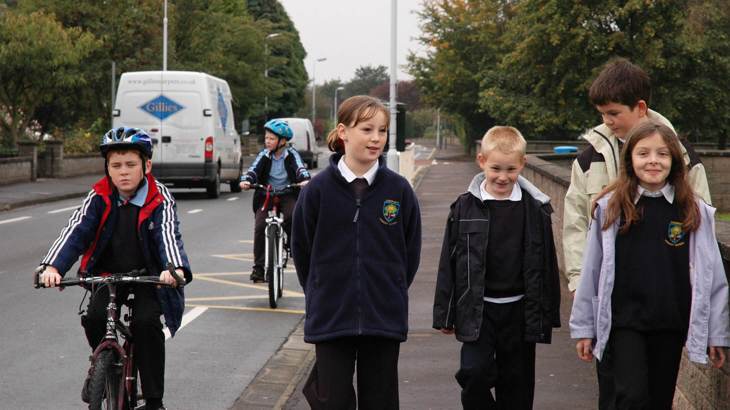Sustrans research reveals children on foot or bike are more than three times as likely to be involved in a collision with a vehicle in the 20% most deprived areas in Scotland than in the 20% least deprived areas.

We need more widespread high-quality infrastructure and lower speeds in streets to make children and young people safer, especially in deprived areas
What we have been studying
Though it is well-established that there are more road traffic accidents in more deprived areas, we have been researching specifically children travelling actively on foot or by bike.
Sustrans Scotland compared road casualty data for slight and serious injuries with the Scottish Index of Multiple Deprivation to work out the risk to children in different areas. This produced the average risk of being involved in an incident across Scotland depending on the level of deprivation.
What we found
The risk for a child on foot or bike of being involved in a road traffic accident increases as areas become more deprived. From an average of 0.25 incidents per data zone in the least deprived areas, to an average of 0.83 incidents per data zone in the most deprived areas.
Children on foot and bikes are at a disproportionate risk of injury in deprived areas.
Why is this?
We do not know and this research isn’t designed to tell us. The truth is that everywhere will be different and there are lots of interwoven factors that lead to this social injustice.
However, our work delivering walking and cycling infrastructure and working with communities leads us to a few theories:
- Deprived areas are often denser and busier, so you might expect more casualties as there are more people around.
- Deprived areas are more likely to host busy and fast roads that are more dangerous.
- Car ownership is likely to be low in these areas (though the number of cars driving through might be high) which means that more people are out on foot or a bike on the way to school or work.
- There may be a lack of investment in infrastructure and local people may not have the time or resources to complain or organise a response.
What do we want to happen?
Though we are not sure why this is happening, we do know what we can do to reduce this inequality and deliver safer streets. The most effective preventative measures are safe infrastructure and slower speed limits.
- Infrastructure: Evidence shows pedestrian safety requires appropriate crossings, wide pavements and comfortable walking routes. And for cycling, protected space offers the biggest improvement.
- Lower speed limits: Protecting children from cars means that we need to slow down cars. Slower streets reduce both the number and severity of collisions. The implementation of 20mph has been particularly effective in deprived communities, where it halved casualties in the most deprived areas of London.
- More research: There is a need for more research to better understand the causes of this inequality.
If we want more people to choose walking and cycling, and more children seeing the health benefits of active travel to school, we need to start by making our streets safer places - especially in Scotland’s most disadvantaged areas.





